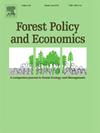Adapting conservation easement to Chinese conservation context: from theory to practice
IF 3.8
2区 农林科学
Q1 ECONOMICS
引用次数: 0
Abstract
Conservation easements (CEs) are efficient conservation tools to coordinate public-private interests. As China establishes a new national park system, CEs have been tested as a potential solution to the conservation-development trade-off in populated rural areas where collective forestland rights emerge as a major concern. However, limited research exists on their adaptability in China's National Park context. This study employs a qualitative approach to examine CEs' utility in forest management through theory and in practice in the Qianjiangyuan National Park Pilot (QNP). Through a necessity and feasibility assessment framework and structured interviews with key informants, findings indicate that CEs represent a promising conservation tool for achieving conservation targets by easing human pressures while maintaining land ownership and use rights at low cost under complex land tenure. Local governance, non-governmental organisations' participation, academic involvement, protected area management, and community governance were all identified as contributing factors for CE feasibility, with importance decreasing in that order. Further semi-structured interviews with qualitative content analysis revealed that the park agency prioritised CE's necessity for land tenure issues, particularly its cooperation with local governments to leverage a policy window for unified land management rather than state-owned land transformation. This cooperation emerged as a key condition for local CE adaptation. The study concludes that multi-stakeholder collaboration is essential to develop CE as a science-based land management tool that maximises its “minimum restriction for maximum comprehensive benefit” role.
保护地役权适应中国环境:从理论到实践
保护地役权是协调公私利益的有效保护工具。随着中国建立新的国家公园体系,在人口稠密的农村地区,集体林地权利成为一个主要问题,作为解决保护与发展之间权衡的潜在解决方案,生态公园已经得到了检验。然而,关于它们在中国国家公园环境下的适应性研究却很少。本研究以钱江源国家公园试点为研究对象,采用定性分析的方法,从理论和实践两方面考察了生态系统在森林管理中的效用。通过必要性和可行性评估框架以及对关键信息提供者的结构化访谈,研究结果表明,生态系统是一种有希望的保护工具,可以通过减轻人类压力,同时在复杂的土地权制下以低成本保持土地所有权和使用权,实现保护目标。地方治理、非政府组织参与、学术参与、保护区管理和社区治理都被认为是影响可持续发展可行性的因素,重要性依次递减。进一步的半结构化访谈和定性内容分析显示,公园机构优先考虑CE在土地权属问题上的必要性,特别是它与地方政府的合作,利用统一土地管理的政策窗口,而不是国有土地转型。这种合作成为地方适应环境行政的关键条件。该研究的结论是,多方利益相关者的合作对于将环境行政发展成为一种基于科学的土地管理工具至关重要,这种工具可以最大限度地发挥其“最小限制,最大综合效益”的作用。
本文章由计算机程序翻译,如有差异,请以英文原文为准。
求助全文
约1分钟内获得全文
求助全文
来源期刊

Forest Policy and Economics
农林科学-林学
CiteScore
9.00
自引率
7.50%
发文量
148
审稿时长
21.9 weeks
期刊介绍:
Forest Policy and Economics is a leading scientific journal that publishes peer-reviewed policy and economics research relating to forests, forested landscapes, forest-related industries, and other forest-relevant land uses. It also welcomes contributions from other social sciences and humanities perspectives that make clear theoretical, conceptual and methodological contributions to the existing state-of-the-art literature on forests and related land use systems. These disciplines include, but are not limited to, sociology, anthropology, human geography, history, jurisprudence, planning, development studies, and psychology research on forests. Forest Policy and Economics is global in scope and publishes multiple article types of high scientific standard. Acceptance for publication is subject to a double-blind peer-review process.
 求助内容:
求助内容: 应助结果提醒方式:
应助结果提醒方式:


